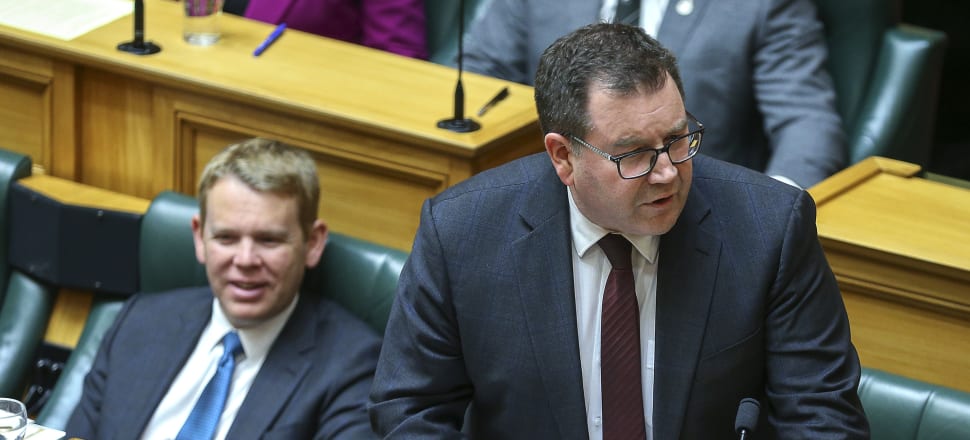
The Government is taking its Cyclone Gabrielle recovery cue from Queensland rather than the Christchurch earthquakes rebuild. Ministers are set on avoiding a repeat of past mistakes, which are still burdening some Cantabrians more than a decade later, writes political editor Jo Moir.
In late November of 2010, rain began falling in Queensland.
By January the following year, extensive flooding had impacted 75 percent of the Australian state and it was declared a disaster zone.
Prime Minister Chris Hipkins and new Cyclone Recovery Minister Grant Robertson are taking their lead from Queensland to rebuild the seven regions impacted by the extreme rain and wind that devastated homes, farms, businesses, and livelihoods earlier this month.
A taskforce headed by Sir Brian Roche, the Government’s go-to fixer, will be structured similarly to that of the Queensland taskforce.
Over time, it’s expected the taskforce will morph into a group like the Queensland Reconstruction Authority, which is the long-term group responsible for dealing with event-specific recovery plans across the state.
READ MORE: * Govt announces $250m for roads * Rod Oram: Let's ditch short-termism * Logs like bulldozers - East Coast betrayed
The recovery has both short-term and long-term issues that need addressing and that means some consideration will need to be given to working with the Opposition to ensure continuity in the years to come.
Hipkins is yet to pick up the phone to National leader Christopher Luxon.
That was evidenced in the fact Luxon immediately came out of the gates declaring “the Government has failed to deliver for five years” and the measures announced on Monday “will not give the public confidence that things will change”.
The longer the country remains in a state of emergency, the longer the Opposition is starved of political oxygen, and Luxon will be hoping the recovery stage begins sooner rather than later to give him a platform from which to critique the Government.
In election year, that also requires explaining how he would do it differently and how much it would cost, and eyebrows may well be raised if he cites the Christchurch rebuild as the template.
If things were different and Ardern and Robertson were still at the helm it would be Hipkins who would have been given the job, but with the tables turned it is Robertson – hardly a minister in need of a new job – who drew the short straw.
In the aftermath of the Christchurch earthquakes in 2011, the then-National government set up the Canterbury Earthquake Recovery Authority (CERA).
In 2017, the Auditor-General Lyn Provost wrote a bleak report on the authority’s performance, particularly in later years as the public lost confidence in its transparency and it struggled to meet the objectives it had set out for itself.
On the ground in Christchurch, people affected by the earthquakes and still waiting years later for help to rebuild homes and businesses frequently reported CERA as being highly bureaucratic and an extension of central government that arrived in Canterbury to tell everyone what to do.
The Queensland model is based on regional input and leadership, and could see large numbers of government and non-government staff deployed to affected towns and cities to help oversee what will be a community-led response - something CERA lacked from start to finish.
The taskforce will be made up of representatives from banks, insurance companies, iwi, the construction sector, local and central government. It will be a national group with a broad membership that listens to and works with local groups before feeding back insights to Wellington from the coalface.
In addition to that, a minister will be appointed for each of the affected regions who will feed local information into a Cabinet committee, to keep a watch on how things are going with the recovery.
Robertson will chair that committee and be responsible for reporting to Cabinet as a whole – but most importantly to Hipkins, who needs a safe pair of hands and eagle eyes on the job.
If things were different and Ardern and Robertson were still at the helm it would be Hipkins who would have been given the job, but with the tables turned it is Robertson – hardly a minister in need of a new job – who drew the short straw.
Robertson is an obvious choice for the reasons above, and because he’s the one in charge of the purse strings. Rather than having a cyclone recovery minister going back and forth with the finance minister over why money is needed for this and that, Robertson only needs to convince himself and Hipkins.
In reality the recovery from Cyclone Gabrielle is going to have all sorts of impacts on Robertson’s May Budget, though nothing quite as dramatic as in 2020 when the Government had to toss its plans in the bin and start again just weeks out from publication.
At this early stage nobody sitting around the Cabinet table knows how much the recovery will cost, although there are reasons to expect a clearer picture than with the Covid-19 response.
The pandemic was new territory and Robertson had to have all the cash available to deal with any number of factors.
Extreme weather events are more familiar in the sense there’s a better understanding of exactly where the money will be needed.
There will also be a more ruthless approach taken to spending it. If a road has been rebuilt once or twice before already, it’s safe to say it’s not getting built again.
These sorts of weather events aren’t new, and if there’s anything the Government is sure of at this early stage, it’s that there will be more of them.
Building infrastructure in the same spot isn’t money well spent.







